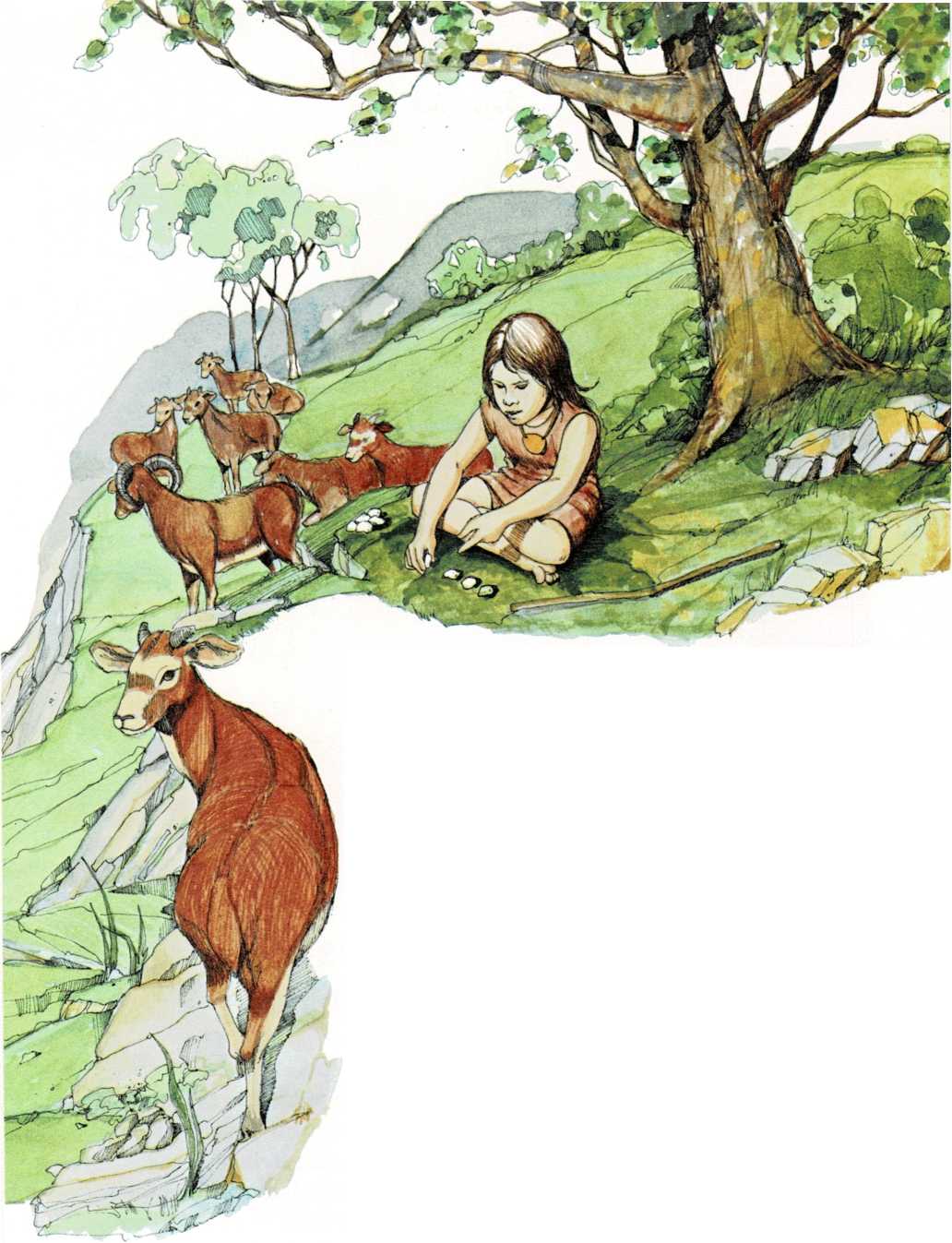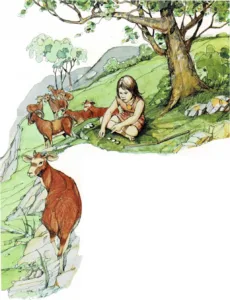Pebbles for tens
Like everyone else in the family, Mirim had lots of work to do. Even
when she was very little, Mirim had helped her mother grind grain for
bread and pick berries and grapes. But now that she was seven, she had
her first full-time job. Every day it would be hei* task to watch the
family’s flock of sheep.
When Mirim’s grandfather, Amu, was a little boy, he had watched the
sheep. But now there were many more sheep. The flock had grown to nearly
fifty. At first, Mirim had trouble keeping count of them.
As she counted each sheep, she touched her fingers. When she had touched
all ten fingers, she would say, “There’s a ten of sheep.” Then she would
count another “ten of sheep.” But sometimes, she would forget how many
tens she had counted, and would have to start over.

However, Mirim was a clever girl. She soon found an answer to her
problem. She gathered a number of small pebbles, and each time she
counted a “ten of sheep” she put a pebble on the ground. When she had
counted the last group of sheep, which came to eight fingers, she looked
at the pebbles on the ground. Four pebbles. That meant she had four tens
and eight fingers of sheep (forty-eight).
Almost everyone who has ever had to count large numbers of things for
the first time must have soon thought of this idea. Using pebbles,
notches in sticks, or marks on rocks is a good way to keep a record of
the number of things counted. It makes counting any large number of
things much easier. And this idea was the beginning of a really
marvelous invention—a counting machine.

